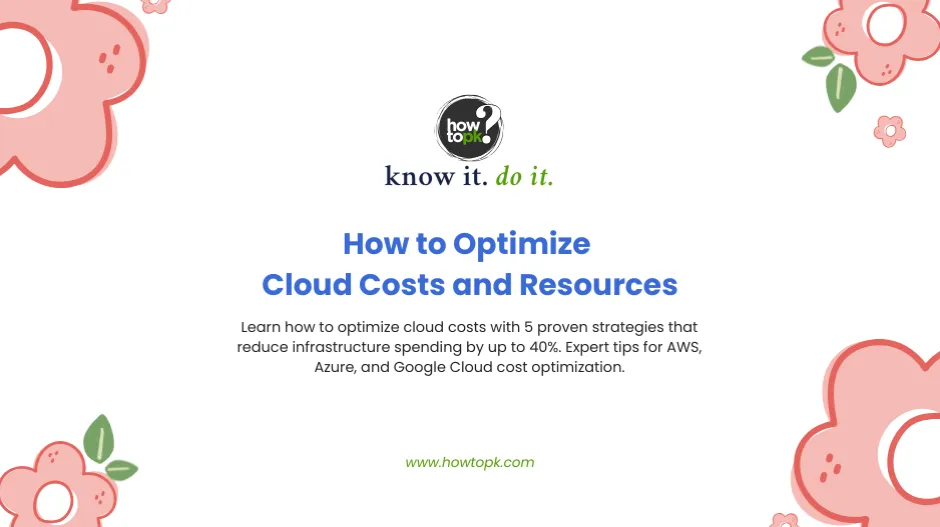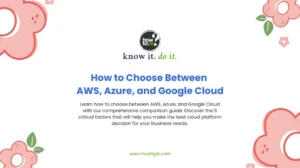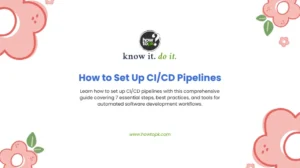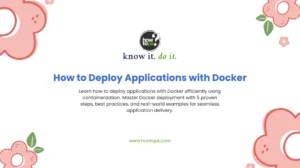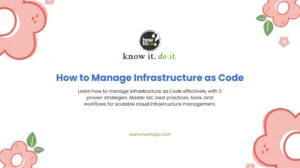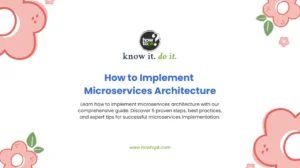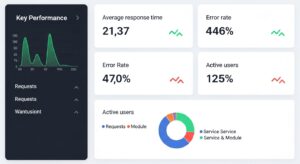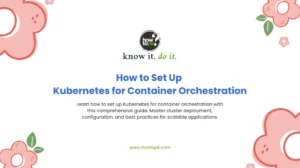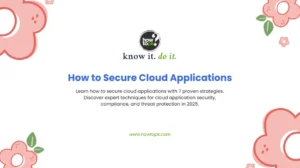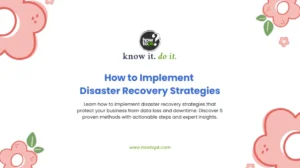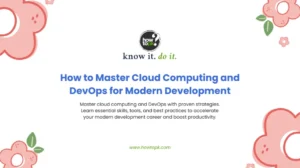When organizations migrate to the cloud, many experience what experts call “cloud cost shock” – discovering their monthly bills are 30-50% higher than anticipated. To optimize cloud costs effectively, you need a strategic approach that balances performance, scalability, and financial efficiency.
Cloud spending has grown exponentially, with global public cloud services expected to reach $679 billion in 2024 according to Gartner’s latest forecast. However, studies show that organizations waste approximately 30% of their cloud budget on unused or underutilized resources.
Understanding the Cloud Cost Challenge
Before diving into optimization strategies, let’s explore why cloud costs spiral out of control. The pay-as-you-go model that makes cloud attractive can also lead to unexpected expenses when resources aren’t properly managed.
Common Cost Drivers
The primary factors that inflate cloud bills include oversized instances, idle resources, inefficient storage configurations, and lack of automated scaling. Additionally, many organizations fail to leverage discount programs like Reserved Instances or Savings Plans, missing significant cost reduction opportunities.
Data transfer costs between regions and services often catch teams off-guard, especially when architectures aren’t designed with cost efficiency in mind. Understanding these patterns is crucial to optimize cloud costs systematically.
Strategy 1: Right-Size Your Infrastructure
Right-sizing involves matching your cloud resources to actual workload requirements. Most organizations overprovision resources “just in case,” leading to substantial waste.
Performance Monitoring and Analysis
Start by implementing comprehensive monitoring using tools like AWS CloudWatch, Azure Monitor, or Google Cloud Operations Suite. Track CPU utilization, memory consumption, network I/O, and storage patterns over 30-60 days to establish baseline performance metrics.
Look for instances consistently running below 20% CPU utilization or with minimal memory usage. These are prime candidates for downsizing. Similarly, identify resources with sporadic usage patterns that could benefit from auto-scaling configurations.
Implementation Best Practices
When right-sizing, consider both vertical scaling (changing instance types) and horizontal scaling (adjusting the number of instances). For example, replacing a large instance running at 15% capacity with a smaller instance at 60% capacity can reduce costs by 40-60% while maintaining performance.
Create a structured approach:
Resource Type | Utilization Threshold | Action Required |
Compute Instances | <20% CPU for 7 days | Downsize or terminate |
Storage Volumes | <50% utilization | Resize or optimize |
Network Resources | Minimal data transfer | Review architecture |
Memory | <40% utilization | Consider memory-optimized alternatives |
Strategy 2: Implement Automated Resource Management
Automation is essential to optimize cloud costs at scale. Manual resource management becomes impractical as your cloud footprint grows, leading to human errors and oversight.
Auto-Scaling Configuration
Configure auto-scaling groups that respond to actual demand rather than maintaining constant capacity. Set up policies that scale out during peak hours and scale in during low-demand periods. This approach can reduce costs by 25-40% for variable workloads.
For AWS users, implement Application Auto Scaling across services like EC2, RDS, and DynamoDB. Azure customers should leverage Virtual Machine Scale Sets and App Service auto-scaling. Google Cloud offers similar capabilities through Managed Instance Groups and Cloud Run scaling features.
Scheduled Resource Management
Implement automated start/stop schedules for non-production environments. Development and testing resources often run 24/7 unnecessarily, contributing significantly to waste. Automating shutdown during nights and weekends can reduce development environment costs by 60-70%.
Use infrastructure as code (IaC) tools like Terraform, AWS CloudFormation, or Azure Resource Manager templates to ensure consistent, cost-optimized deployments across environments.
Strategy 3: Leverage Reserved Instances and Savings Plans
Reserved capacity pricing models offer substantial discounts for predictable workloads. However, many organizations underutilize these programs due to complexity or commitment concerns.
Understanding Commitment Options
Reserved Instances typically offer 30-70% discounts compared to on-demand pricing. The key is accurately forecasting your baseline capacity requirements. Analyze historical usage patterns to identify workloads that run consistently for extended periods.
AWS Savings Plans provide flexibility by offering discounts across compute services (EC2, Lambda, Fargate) based on dollar commitments rather than specific instance types. This approach offers better flexibility while maintaining significant cost savings.
Strategic Implementation
Start conservatively with 50-60% reserved capacity coverage for predictable workloads, leaving room for growth and variability. Use a mixed approach combining 1-year and 3-year terms based on business predictability and cash flow preferences.
Consider convertible Reserved Instances that allow instance family changes, providing flexibility as requirements evolve. While slightly more expensive than standard reservations, they offer valuable adaptability for dynamic environments.
Strategy 4: Optimize Storage and Data Management
Storage costs often represent 20-30% of total cloud spending, making it a crucial area to optimize cloud costs. However, storage optimization requires understanding access patterns, retention requirements, and performance needs.
Intelligent Tiering Strategies
Implement automated storage lifecycle policies that move data between storage tiers based on access frequency. Hot data requiring immediate access should remain in premium storage, while cold data can transition to archive storage at 80-90% lower costs.
AWS S3 Intelligent Tiering, Azure Blob Storage access tiers, and Google Cloud Storage classes provide automated tiering based on access patterns. These services monitor usage and automatically optimize storage costs without manual intervention.
Data Lifecycle Management
Establish clear data retention policies that automatically delete unnecessary data. Log files, temporary files, and outdated backups accumulate over time, creating significant storage overhead.
Configure automated backup lifecycle policies that retain recent backups in standard storage while moving older backups to archive storage. Delete backups beyond retention requirements to eliminate unnecessary costs.
Strategy 5: Monitor and Govern Cloud Spending
Continuous monitoring and governance ensure long-term cost optimization success. Without proper oversight, optimized environments gradually accumulate waste through organic growth and changing usage patterns.
Cost Monitoring and Alerting
Implement comprehensive cost monitoring using native tools like AWS Cost Explorer, Azure Cost Management, or Google Cloud Billing. Set up budget alerts at multiple thresholds (80%, 90%, 100% of budget) to catch cost spikes early.
Create department or project-based cost allocation using tags and resource groups. This visibility enables accountability and helps identify areas requiring optimization attention.
Governance Frameworks
Establish cloud governance policies that prevent cost overruns proactively. Implement resource quotas, approval workflows for large instances, and automated policies that prevent common waste scenarios.
Use cloud management platforms like CloudHealth, Cloudability, or native provider tools to create centralized cost management dashboards. These platforms provide advanced analytics, recommendations, and automation capabilities beyond native tools.
Continuous Optimization Process
Create a regular optimization cadence with monthly cost reviews, quarterly right-sizing assessments, and annual architecture reviews. Assign cost optimization responsibilities to specific team members to ensure accountability.
Document optimization decisions and track savings to demonstrate ROI and identify successful strategies for replication across other projects or departments.
Advanced Cost Optimization Techniques
For organizations seeking maximum efficiency, advanced techniques can deliver additional savings beyond basic optimization strategies.
Multi-Cloud Cost Arbitrage
Consider leveraging multiple cloud providers for specific workloads based on pricing advantages. While this approach increases complexity, it can yield 15-25% additional savings for organizations with appropriate expertise.
Research shows that compute-intensive workloads might be more cost-effective on certain providers, while storage or networking-heavy applications favor others. Detailed analysis of your specific workload characteristics is essential for successful multi-cloud cost optimization.
Spot Instance and Preemptible Instance Strategies
Implement spot instances for fault-tolerant workloads like batch processing, data analysis, or development environments. Spot instances offer 50-90% discounts but can be terminated with short notice.
Design applications with spot instance interruption handling, automatic restart capabilities, and checkpointing to maximize savings while maintaining reliability. Use spot instances for appropriate workloads while maintaining critical services on regular instances.
Measuring Success and ROI
Track key performance indicators (KPIs) to measure cost optimization success and identify areas requiring additional attention.
Essential Metrics
Monitor cost per unit of business value, resource utilization rates, and optimization implementation rates. Track month-over-month spending changes, cost avoidance through optimization, and return on investment for optimization initiatives.
Calculate total cost of ownership (TCO) including optimization tool costs, staff time investment, and potential performance impacts. Ensure optimization efforts deliver net positive returns while maintaining service quality.
Reporting and Communication
Create executive-level dashboards showing cost trends, optimization savings, and future projections. Regular reporting builds stakeholder confidence and secures continued support for optimization initiatives.
Document case studies of successful optimizations, quantifying both cost savings and any performance improvements. These success stories help build organizational support for continued optimization efforts.
Conclusion
To optimize cloud costs effectively requires a comprehensive approach combining right-sizing, automation, intelligent purchasing, storage optimization, and continuous governance. Organizations implementing these five strategies typically achieve 25-40% cost reductions while maintaining or improving performance.
Success depends on treating cost optimization as an ongoing process rather than a one-time project. Regular monitoring, continuous improvement, and organizational commitment to cost efficiency create sustainable savings and operational excellence.
The investment in cloud cost optimization typically pays for itself within 3-6 months through reduced monthly bills, making it one of the highest-ROI initiatives for cloud-native organizations.
Start with the strategy that offers the quickest wins for your organization – often right-sizing or implementing basic automation – then gradually implement additional techniques as your optimization maturity increases.

